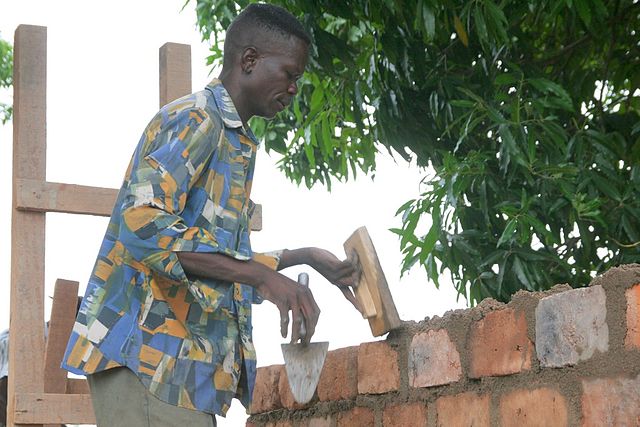 |
| Photo: Brice Blondel for HDPTCAR |
The animal-like figure of the building complex was now consciously being sought. Every nuance was examined, accepted, or rejected. We knew we were playing for high stakes, and we had to pay attention to the process by which the animal spirit would reveal itself, to us, and become substantial. Everyone had to make a shift in orientation to the project, and start thinking of it as a living thing. Together, we found ourselves searching for the living animal.This process is similar to permaculture principle one, Observe & Interact.
Compared with this ideal, the first site plan we made, though also an overall positioning of the elements and their relationships to one another, was not yet fully precise to the level needed for foundations. That required yet another pass, to add still further precision to the points that had been set. The positions had 90% accuracy. Now they needed 100% accuracy, give or take a few inches. Each point, each center, and each corner, had now to be fixed finally, once again by appealing to the real feeling of the real place. To succeed in this, each building had to be staked out with real stakes, examined, reexamined, felt, watched at different times of day, in different weather.
This process is, in its effect, similar to building slowly in a traditional society. It is what would happen naturally, as a farmer, or a traditional master mason built a farm or a village, over a series of decades, and took his time, gradually, to get every detail right. But, in Eishin, because of the conditions of modern site planning, all this had to happen, on the land, over a period of no more than a few months. - Christopher Alexander, The Battle for the Life and Beauty of the Earth. A Struggle Between Two World-Systems, pages 187-188
Here's a lecture by Nikos A. Salingaros which explains the importance of the process:



No comments:
Post a Comment
Note: Only a member of this blog may post a comment.